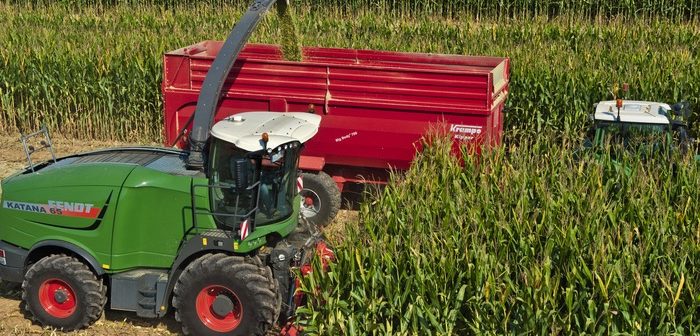Higher maize growing costs coupled with a potential shortfall in silage quantity and quality due to drought conditions, means producers must apply particular care when harvesting these valuable crops this autumn.
“It’s not been a typical season for maize. Record breaking heatwaves have resulted in droughts across the south and east of the UK and we are seeing a lot of stunted and stressed maize crops from East Midlands down to Cornwall.
“By contrast, maize crops in northern regions have faired much better and are generally looking very good,” explains Lientjie Colahan, sales and technical support at Lallemand Animal Nutrition.
“Given the extreme variability in maize crops, it is quite likely that we’ll see a strong market for trading maize silage this winter, with drought affected farms forced to buy-in to make up the shortfall.”
Attention to detail is key
Mrs Colahan explains that attention to detail at harvest time is key to maximise quality and minimise dry matter losses between the field and clamp, especially in the case of drought-stressed crops.
“The naturally occurring microbes that appear within drought stressed maize are counter productive to proper fermentation. This is due to there being less lactic acid bacteria, the drivers of fermentation, but more yeast and moulds which results in heating once the clamp is opened.”
Mrs Colahan says that in tandem with good clamp management, the use of a crop specific incoulant will help to avoid potential problems arising.
“Applying an crop specific inoculant at harvest will support a faster front-end fermentation and help maintain stability throughout storage and feed-out.
Sealing immediately
“Filling fast, packing tight and sealing immediately using an oxygen barrier sheet topped with effective surface weight, will also improve the ensiling process and help ensure a good fermentation in all conditions,” she explains.
Those looking to potentially sell maize, also need to be more mindful of the increased need to take steps to ensure silage stability.
“Sold maize is often moved multiple times, from field to clamp, to transport to yard or clamp. All of this movement makes the maize more vulnerable to heating up, increasing the chances of spoilage. In this scenario, it’s even more important to treat maize with a crop specific incoulant at harvest, to maintain feed-out quality and sale value,” says Mrs Colahan.
“With the impact of poorer maize crops likely to affect winter rations, now is a crucial time to start discussing with your nutritionist strategies to prolong feeding and consider what cost-effective alternatives may be available,” concludes Mrs Colahan.




